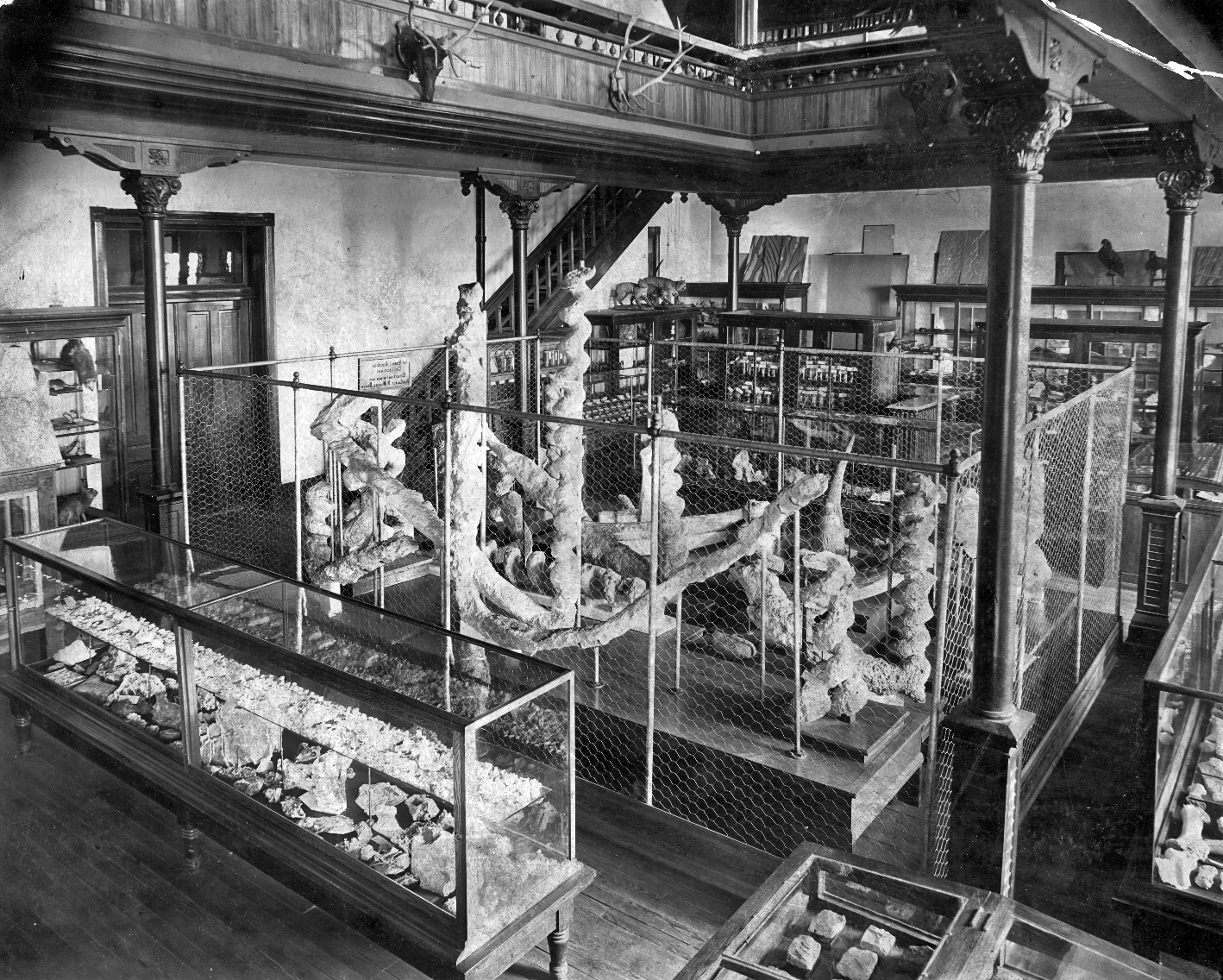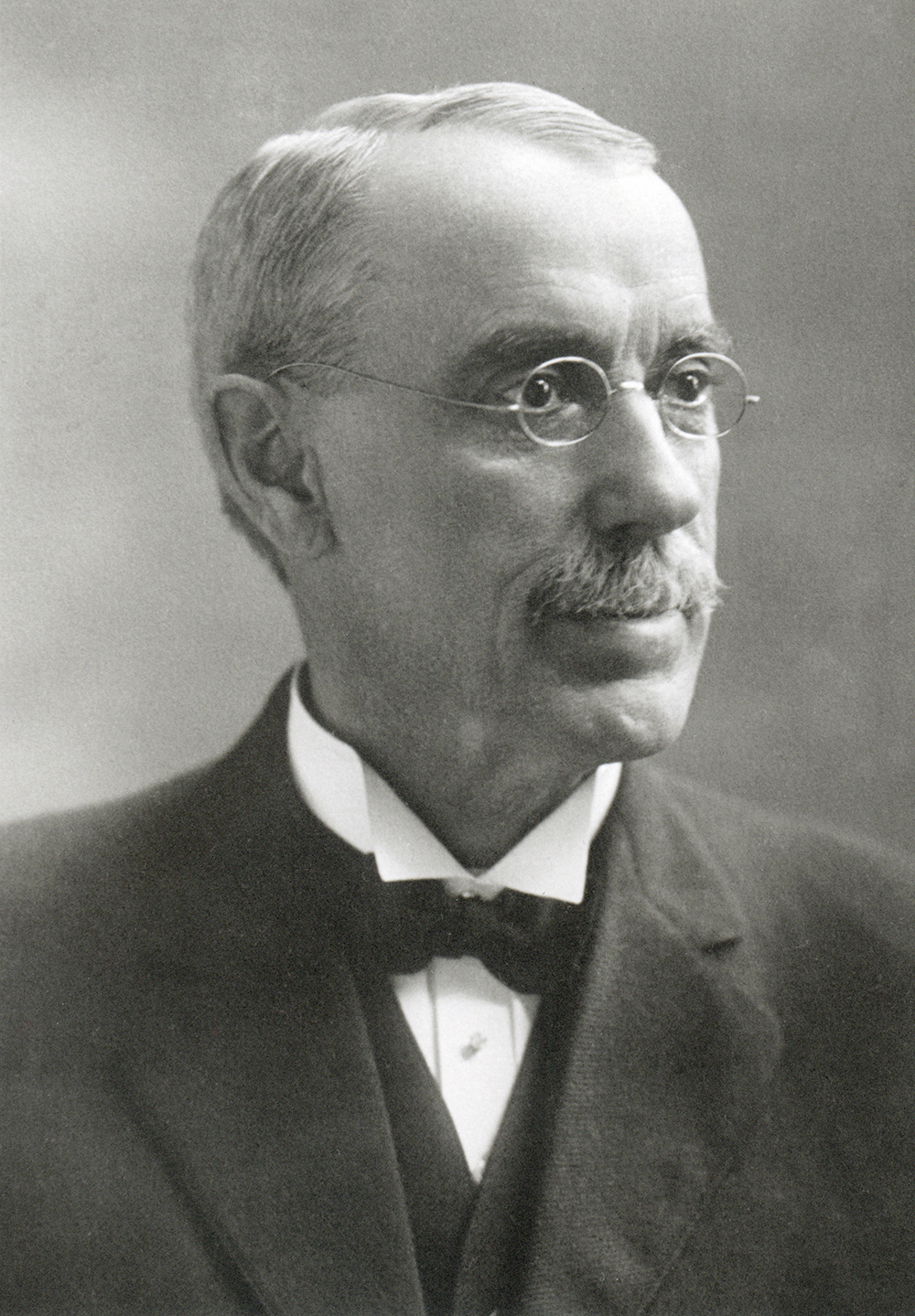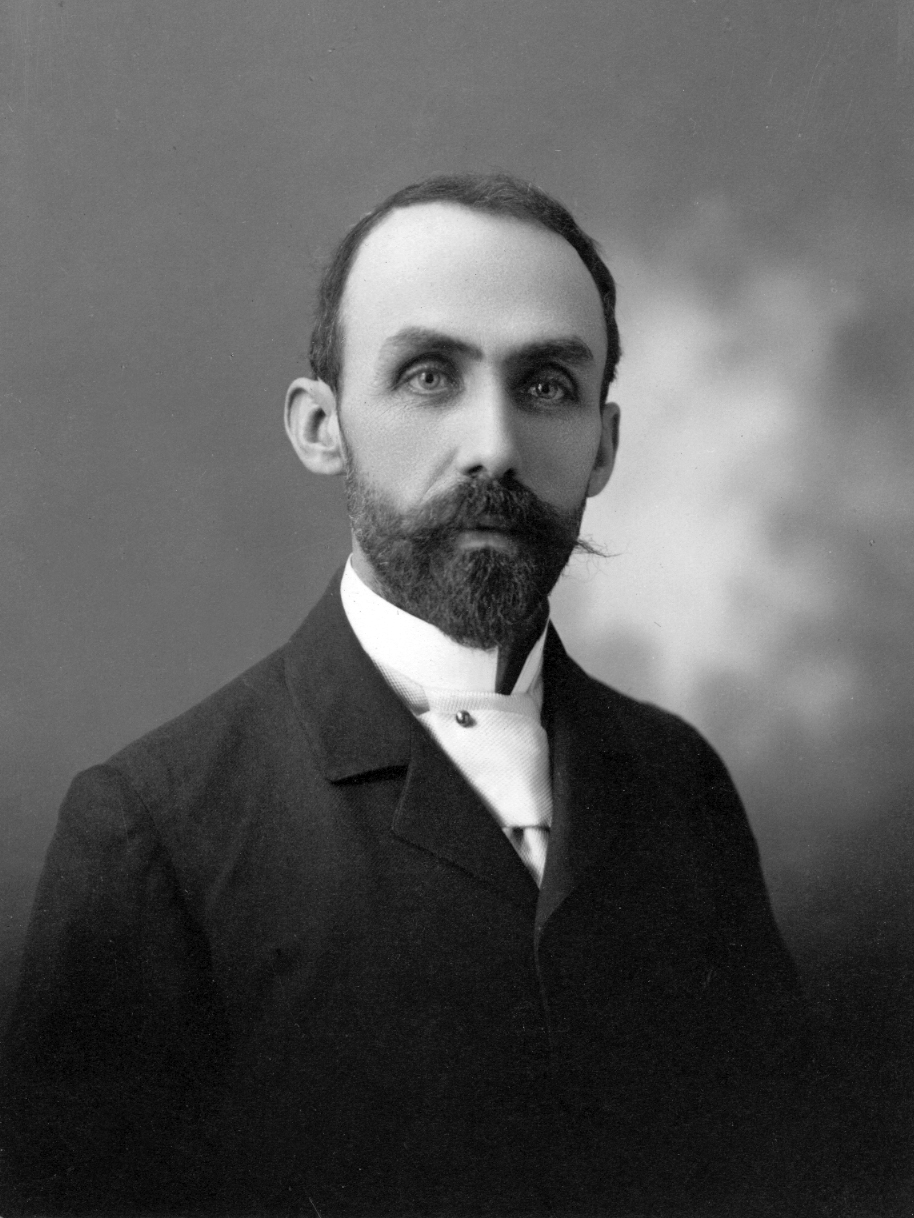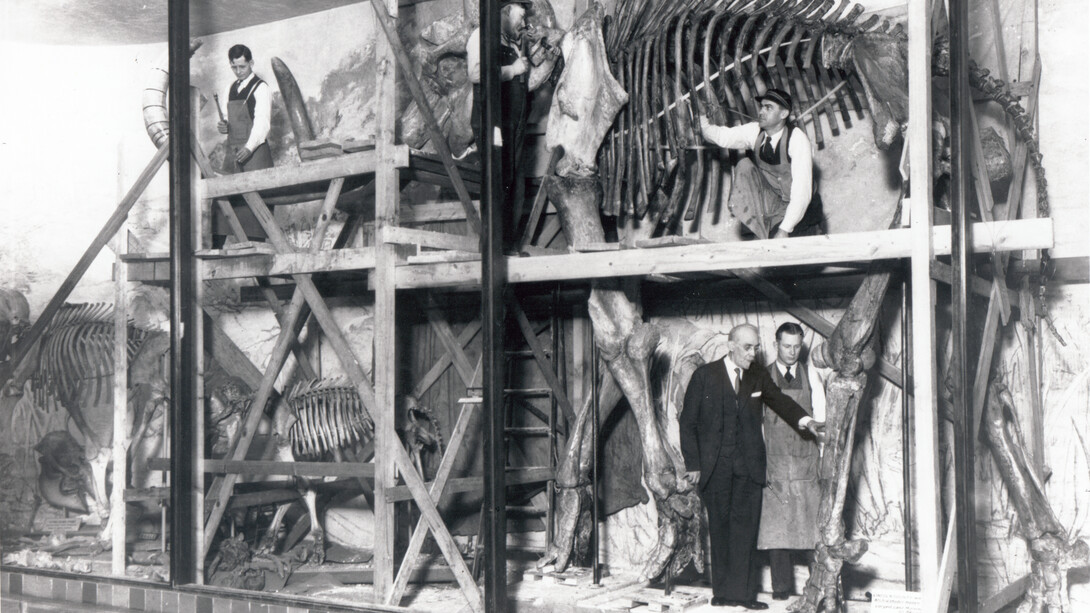
The exploits of Yale University fossil hunters — and a struggling homesteader’s fateful decision not to join the Black Hills Gold Rush — helped bring together the founders of the University of Nebraska State Museum.
Those tales and others about the careers of E.H. Barbour and Charles H. Morrill are explored in “The Museum Builders: A Story of Fossils and Friendship,” a new exhibition opening June 23 at the museum in Morrill Hall.
The exhibition highlights how the two men’s shared ambition led to the creation of Nebraska’s internationally known natural history museum. It includes an escape room that challenges visitors to help prove that Nebraska paleontologists were the first to record a find at the world-famous Agate Fossil Beds near Harrison, Nebraska.
“This exhibition tells the story of how Barbour and Morrill came together from two very different backgrounds, but shared the same grand vision to create a grand museum of the plains of Nebraska,” said George Corner, vertebrate paleontology collections manager with the museum. “When you analyze it, what they really had in common is Yale’s O.C. Marsh and the infamous bone wars of the 1870s.”
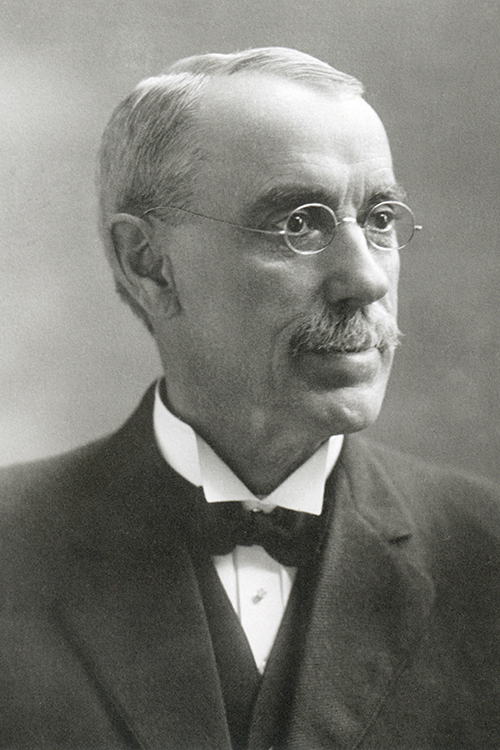
During his first summer in the Panhandle, Morrill met a field crew of students who worked for Marsh.
“They talked about an incredible Badlands fossil site where they were working and Morrill went to visit,” said Rob Skolnick, a preparator with the museum. “There’s a great quote in his autobiography about how there were fossils everywhere.
“The experience inspired Morrill. He walked away wanting Nebraska to build its own museum and keep the fossil finds here rather than allowing them to go east to Yale.”
While not a part of the Yale team Morrill encountered, Barbour studied under Marsh. He was a talented artist, sketching illustrations of items found on expeditions and creating cartoons for the Yale yearbook.
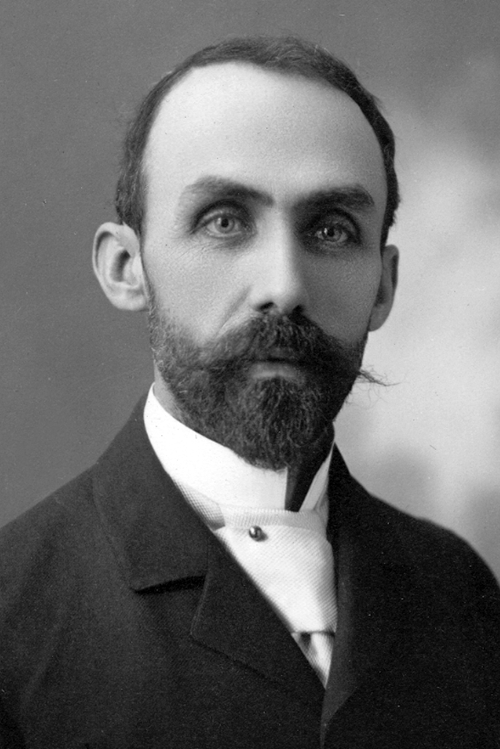
“When Barbour got to the University of Nebraska, there was almost nothing in the museum collection,” Skolnick said. “There was also no money in the budget to pay for field expeditions, so, on his own dime, Barbour went out collecting specimens.”
Barbour led self-financed expeditions across Nebraska in 1891 and 1892. The teams gathered an extensive set of minerals, sediment samples and vertebrate fossils, which served as the basis of the museum collection.
Morrill went on to a lucrative career with the Chicago, Burlington and Quincy Railroad. He was serving as president of the NU Board of Regents when he learned of Barbour’s work.
“Morrill talked with Barbour and was very impressed with the fossils that he had collected — especially as Barbour was self-funding the work,” Corner said. “As they both had a shared dream of having Nebraska fossils on display for students to study, Morrill decided that he needed to support this guy.”
As a university leader, Morrill worked to establish regular funding for Barbour. For several decades, he used personal funds to finance annual fossil-hunting expeditions, which became known as Morrill fossil expeditions.
The exhibition features historic photos, artifacts and fossils, alongside audio stories and augmented reality displays accessible via smartphone. The augmented reality portions examine the Barbour sketches used in mosaics at the Nebraska State Capitol and the story behind “devil’s corkscrews” — the fossilized spiral burrows made by prehistoric beavers.
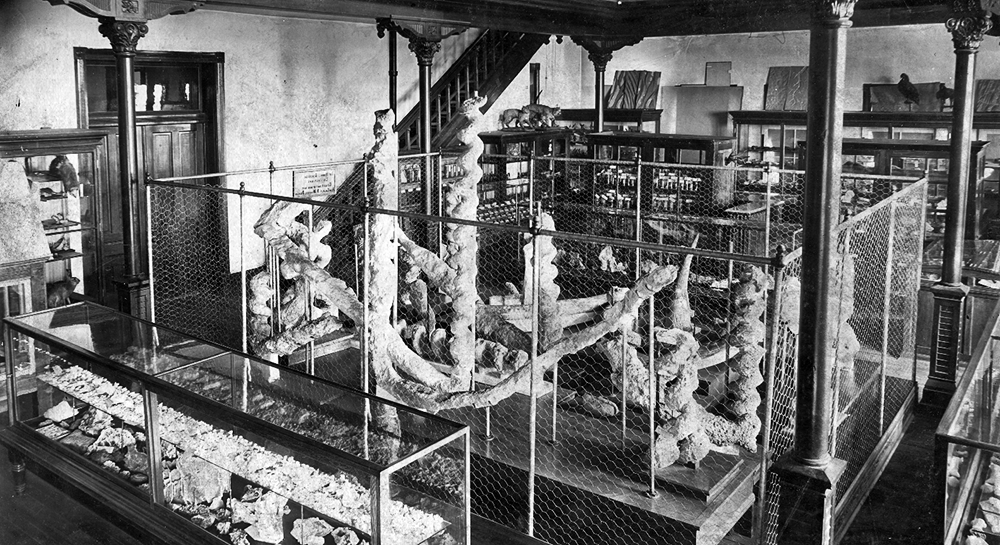
The corkscrews also provide the basis for the escape room, “Natural History Mystery Escape Room Experience: Dr. Barbour and the Devil’s Corkscrew.”
Open through summer 2019, the exhibition and escape room are an opening act for the NU State Museum’s “Cherish Nebraska” renovation, slated to open in early 2019. They also are a preamble to the museum’s 150th anniversary in 2021.
Reservations are required to access the escape room and tickets must be purchased 24 hours in advance. Learn more about the escape room.
The museum will celebrate the opening of the “Museum Founders” during Sunday with the Scientist, 12:30 to 4:30 p.m. June 24. Learn more about “Museum Founders” and other programs at the University of Nebraska State Museum.

